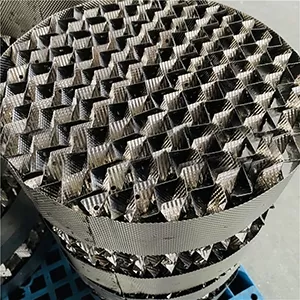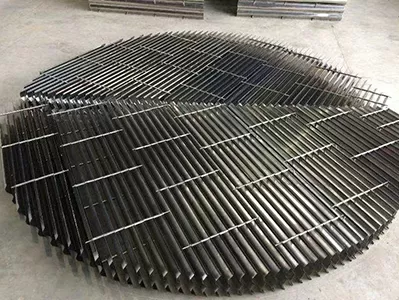Do Metal Rings Belong to structured packing?
No, metal rings do not belong to structured packing. Instead, they are typically classified as a type of random packing, distinct from structured packing in terms of design, arrangement, and performance characteristics.

Structured packing is defined by its regular, ordered, and geometrically uniform structure. It consists of interlocking or stacked modules (such as corrugated sheets or grids) with precisely engineered channels that promote consistent gas-liquid contact. This uniform arrangement ensures predictable flow patterns, high mass transfer efficiency, and low pressure drop, making it suitable for precision separation processes.

Metal rings, by contrast, are individual, discrete components with irregular or semi-regular shapes (e.g., pall rings, raschig rings, or Intalox saddles) that are randomly packed into a tower or vessel. When installed, they form a loose, unordered bed with variable void spaces and flow paths. This random arrangement allows for flexibility in handling different flow rates and fouling conditions but generally results in lower mass transfer efficiency and higher pressure drop compared to structured packing.
Common examples of metal rings, such as Pall rings—with their cylindrical shape, windowed walls, and internal fins—are designed to maximize surface area within a random packing bed. However, their lack of a systematic, ordered structure disqualifies them from being categorized as structured packing. Metal rings are valued for their durability, ease of installation, and cost-effectiveness in applications where high precision is not critical, such as general absorption, stripping, or bulk separation processes.
In summary, metal rings are random packing, not structured packing. Their classification is based on their random arrangement and discrete, individual design, which set them apart from the engineered, uniform structure of structured packing.

